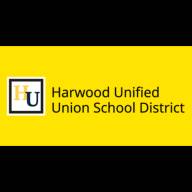The Harwood Unified Union School District (HUUSD) Board is beginning the budgeting process for the next fiscal year, FY26, and regardless of how lean the budget is kept, tax increases will result.
At its October 23 meeting the board’s finance committee, district superintendent Dr. Mike Leichliter and finance director Lisa Estler provided the board with an early look at how budgeting could work this year.
Here are some preliminary budget numbers from Estler.
- Teachers will see a 6.5% wage increase
- Support staff will see a 5% wage increase
- Staff health insurance costs will be up 18-20%
- The districts HRA/HSA contribution will increase 4%
- Rent will increase 3%
- Utilities will increase 3%
- Transportation is up 6%
Estler discussed board budget targets with the board. A level service budget which provides the same services and programming as the current budget comes in at $51,389,053 and represents a 7.3% increase over the FY25 budget, or $3,496,180.
A level funded budget, providing the same amount of money as the current FY25 budget would be $47,892,873 and would require cutting $3,496,180 from current spending/programming.
A 3% increase in year-over-year spending means a budget of $49,329,659 and cutting $2,059,394. A 2.5% increase in year-over-year spending means a budget of $49,090, 195 and cutting $2,298,858.
But that’s just local spending and local budget impacts and without knowing the per pupil yield that the district will receive from the state funding formula, and not knowing this year’s Common Level of Appraisal, it’s not possible – yet – to calculate tax rates for district towns.
Because the towns in the HUUSD are generally giving towns, meaning they contribute more than they receive from the state’s education fund, even level funding the budget (with no increases) will mean taxes will go up. This is further exacerbated by the fact that the Legislature brought down last year’s tax impacts with a one-time infusion of $70,000,000 during the last session which means state education costs are starting out $70,000,000 in the hole and that hole will have to be filled, Leichliter explained.
Board member Elizabeth Brown, Waterbury, dug deeper on the $70,000,000 shortfall.
“My understanding is that taxpayers need to pay back that $70,000,000 and we know that we pay more into the system than other districts, so potentially, if we go with a 3% year-over-year increase we could still be faced with a 6 or 7% increase. That is something we’re going to have to deal with,” Brown said.
And if that was not enough bad news, HUUSD was one of the schools that lost taxation capacity with last year’s Act 128. To offset that lost capacity, the Legislature gave losing schools a five-year diminishing tax credit that for the HUUSD meant a nine-cent reduction in the tax rate last year. That drops to seven cents this year, five cents the following year, three cents the year after and one cent in the final year.
Finally, Harwood Union enrollment is expected to decrease which means less state funding for the district.
Board member Mike Bishop, Fayston, chair of the finance committee, told the board that the committee wants board feedback on the four scenarios and also wants to work on class sizes, extracurricular activities, pay to play for sports, staffing and transportation. He said the committee would likely come back and make recommendations on a specific scenario, achieved with specific cuts.
Decreasing the budget by 1% means a cut of $514,000. The average teachers’ salary is $71,382, which rises to a budget cost of $112,382 when benefits and taxes are added in. Estler told the board that 71% of the district’s budget are salary and benefits.
Board member Steve Rosenberg, Moretown, asked Estler if all the necessary cuts would then have to come from areas other than staff salaries?
“Last year, someone asked what was flexible in the budget and its really only 10% without making tough decisions affecting students in terms of FTEs, salaries and programming,” Estler said.
Bishop said the finance committee would be taking the preliminary information and making recommendations to the full board.
“These are going to be some really tough conversations. People need to be ready to have these conversations in the next month or so,” he said.
Board member Ben Clark, Moretown, said he didn’t think the conversation was very complex.
“It’s quite simple. Very simple – it’s first and foremost a financial discussion. That’s my north star on this. And it’s what the community will bear and what they want and expect for us to do. That’s what I’m looking at,” Clark said.
Estler said that she wanted a direction from the board at last week’s meeting rather than waiting until after finance committee had completed its review of scenarios and potentials areas for budget cuts.
“It’s my understanding that we’re taking a look at these scenarios and with the information from Lisa and the admins, we’ll present these to the full board soon and the big board will opine on what they want. The finance committee may recommend an option and how to get there. The feedback I’d be looking for is if somebody doesn’t like that scenario. That’s what our plan is now,” Bishop said.
Estler said she’d like to know what the board was thinking in terms of target numbers for the budget.
“Then I can look at ways to meet that target number. It’s a tall task to come up with that in a short time frame. We need a preliminary budget by November 20. I’m looking for, from the large board tonight is a target so I can work with the finance committee to meet that target,” Estler said.
Leichliter suggested a straw poll of the board to determine which scenarios Estler would work on. Board chair Ashley Woods, Warren, polled the board and four members favored a 2.5% increase year over year, while seven favored a 3% increase year over year and two favored a level funded budget with no increases.













